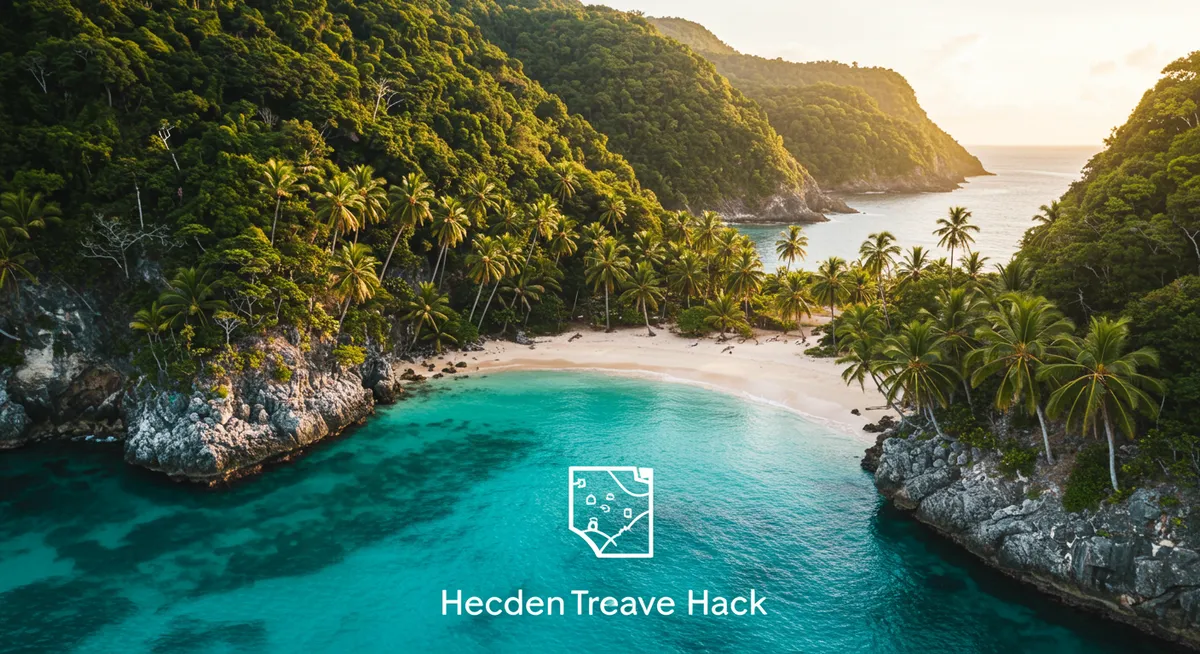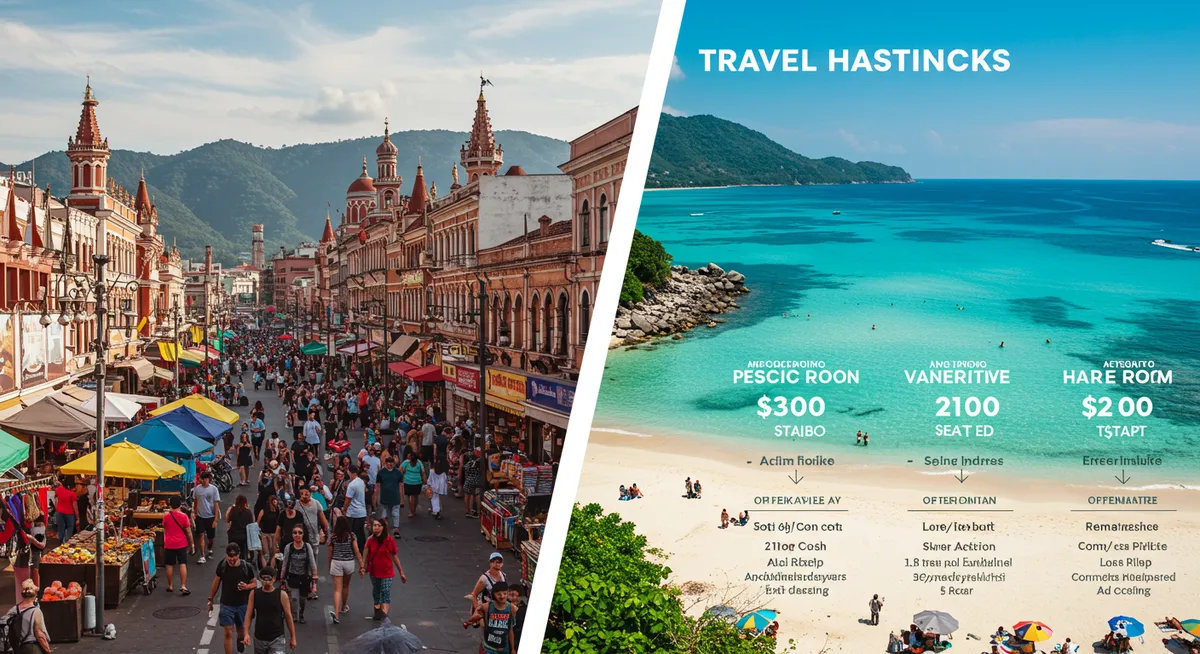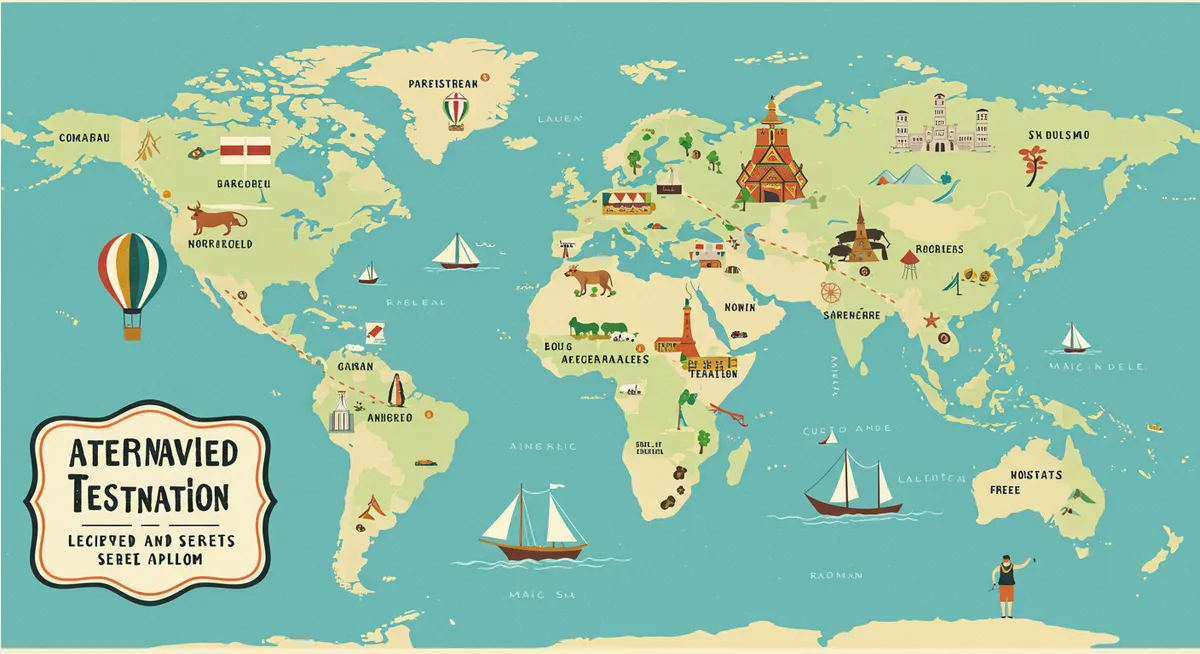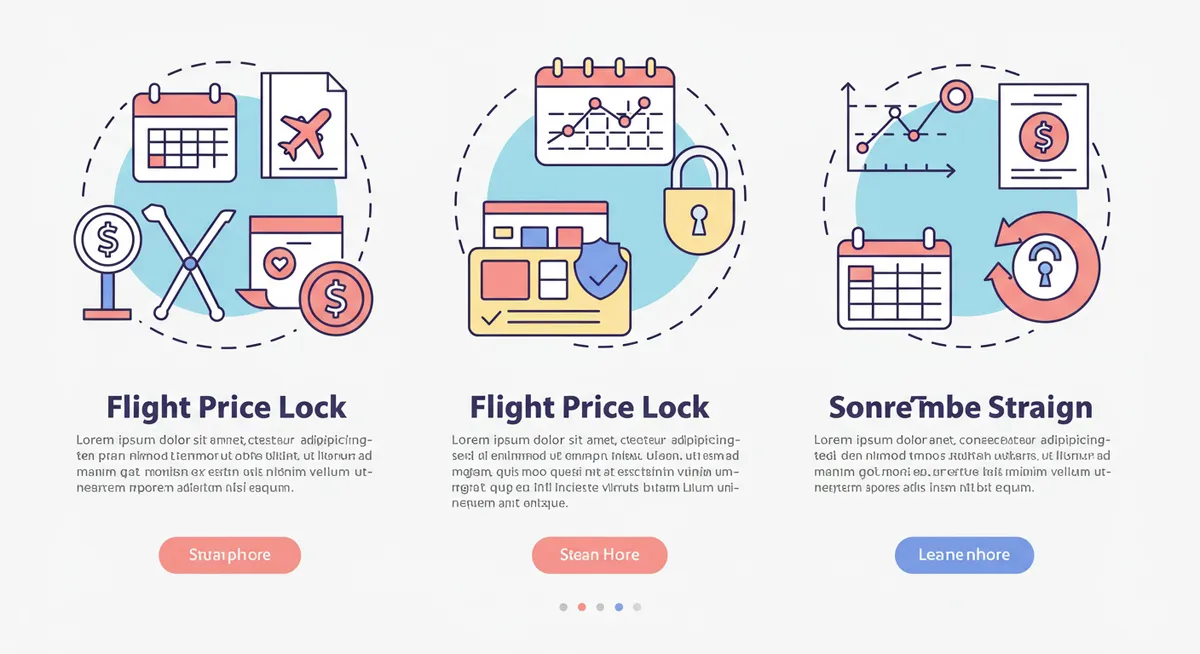
Hidden Destination Alternative Finder: Discover Affordable Luxury Travel Gems
Table of Contents
Want to find the best travel deals for this destination? Chat with our travel hacking specialist!
Get Travel HacksCategory: hidden-destination-alternative-finder
Hidden Destination Alternative Finder: Discover Affordable Luxury Travel Gems
The most popular travel destinations often command premium prices simply due to their name recognition and established tourism infrastructure. These marquee locations—Paris, Santorini, Kyoto, Bali—while undeniably beautiful, typically come with significant downsides: inflated prices, overwhelming crowds, and increasingly manufactured experiences designed for mass tourism. However, a sophisticated alternative approach exists for travelers seeking similar experiences without these drawbacks: the Hidden Destination Alternative Finder strategy.
At hacks.travel, our extensive research has confirmed this technique as one of our top-rated travel strategies for its ability to consistently deliver remarkable cost savings (typically 30-45%) while simultaneously providing more authentic and enjoyable travel experiences. This approach doesn't require compromising on experiences or accommodations—instead, it redirects travelers to carefully selected alternative destinations that offer comparable or superior experiences at a fraction of the cost.
The Hidden Alternative Destination Concept: Same Experience, Better Value
The foundation of this strategy rests on a simple but powerful insight: for nearly every famous destination, there exists at least one "alternative twin" that offers remarkably similar attractions, landscapes, culture, and amenities but remains less discovered by mass tourism. These alternative destinations typically share key characteristics with their famous counterparts:
- Similar geographic features, architecture, or historical significance
- Comparable climate and natural beauty
- Related cultural experiences, cuisine, and local traditions
- Equivalent quality accommodations and infrastructure
- Similar activity options (beaches, hiking, museums, historical sites)
The critical difference lies not in what these destinations offer, but in their position along the tourism development curve. Being earlier in their tourism evolution, these alternatives maintain more authentic experiences, command lower prices across all categories (accommodation, dining, activities), and provide a more balanced ratio of locals to tourists.
"After three disappointing experiences with overcrowded, overpriced 'bucket list' destinations, I was skeptical when a friend suggested Bosnia as an alternative to Croatia. The trip completely changed my perspective on travel. We enjoyed the same stunning architecture, beautiful coastline, and incredible food for about 40% less, with virtually no crowds and genuinely warm local interactions. I've been using the alternative destination approach ever since." — Melissa R., Marketing Director

Proven Hidden Alternatives to Popular Destinations
Our research has identified numerous exceptional alternatives to popular destinations. Here are some of the most compelling pairings:
European Alternatives
- Instead of Santorini, Greece → Try Milos, Greece
Offering similarly stunning white Cycladic architecture and breathtaking blue waters with 35% lower accommodation costs and far fewer crowds. - Instead of the Amalfi Coast, Italy → Try the Bay of Kotor, Montenegro
Featuring equally dramatic coastal scenery, historic villages, and Mediterranean ambiance at approximately 40% lower cost. - Instead of Paris, France → Try Lyon, France
Providing exceptional French architecture, world-class cuisine, vibrant café culture, and extensive art collections with 30-35% savings on accommodations and dining.
Asian Alternatives
- Instead of Kyoto, Japan → Try Kanazawa, Japan
Offering excellently preserved historic districts, traditional gardens, exceptional cuisine, and cultural experiences at 25-30% lower prices with far fewer tourists. - Instead of Bali, Indonesia → Try Lombok, Indonesia
Featuring similar tropical beauty, beaches, and cultural experiences without the overdevelopment, with 40-50% savings on comparable accommodations. - Instead of Phuket, Thailand → Try Koh Lanta, Thailand
Providing beautiful beaches, excellent resorts, and Thai hospitality without the massive crowds and commercialization, at roughly 35% lower prices.
North American Alternatives
- Instead of Napa Valley, California → Try Paso Robles, California
Offering outstanding wineries, beautiful rolling landscapes, and excellent farm-to-table dining with 30-40% savings on tastings and accommodations. - Instead of Tulum, Mexico → Try Bacalar, Mexico
Featuring equally stunning turquoise waters, natural beauty, and relaxed atmosphere without the inflated prices, with 45-50% lower accommodation costs. - Instead of Banff National Park, Canada → Try Jasper National Park, Canada
Providing similar breathtaking mountain scenery, outdoor activities, and wildlife with approximately 25-30% lower costs and significantly fewer crowds.
Step-by-Step Strategy Implementation
Successfully implementing the Hidden Destination Alternative approach requires a systematic process:
Step 1: Identify Your Destination Motivators
Begin by clearly defining what specifically attracts you to your original destination choice:
- Is it particular landscapes or natural features (beaches, mountains, forests)?
- Specific architectural styles or historical periods?
- Certain activities or experiences (wine tasting, hiking, historical sites)?
- Particular cuisine or cultural elements?
- Climate or seasonal considerations?
This precise understanding of your travel motivations is crucial for finding truly satisfying alternatives.
Step 2: Research Potential Alternatives
Using your motivators as search criteria, identify potential alternative destinations:
- Search for "[Original Destination] alternatives" or "places similar to [Original Destination]"
- Explore regions geographically proximate to your original choice
- Consult specialized travel forums like Reddit's r/travel where alternatives are frequently discussed
- Review travel publications for "emerging destination" features
- Use Google Image Search with visual similarities to your original destination
Step 3: Evaluate Alternative Candidates
Assess each potential alternative against these key criteria:
- Experience Alignment: How closely does it match your specific motivators?
- Cost Differential: Compare accommodation, dining, and activity costs (aim for at least 25% savings)
- Accessibility: Transportation options and relative difficulty in reaching the destination
- Tourism Development Stage: Ideal alternatives have basic tourism infrastructure without overdevelopment
- Authenticity Preservation: Extent to which local culture and experiences remain genuine
Step 4: Validate Your Selection
Before finalizing your decision, thoroughly validate your chosen alternative:
- Examine recent visitor reviews (within the past 6-12 months)
- Check Google Maps Street View or recent YouTube videos for current visual confirmation
- Verify actual accommodation availability and pricing for your dates
- Research any seasonal factors that might affect your experience
- Confirm safety considerations and any required travel documentation

Expert Implementation Tips
Elevate your implementation of this strategy with these advanced techniques:
Timing-Based Alternatives
In addition to geographic alternatives, consider timing-based substitutions. Visiting the same marquee destination during shoulder or off-season can deliver a similar cost advantage and reduced crowding as a geographic alternative. The optimal approach often combines both strategies—an alternative destination during its ideal (but not peak) season.
The "One Region Removed" Technique
Many of the best alternatives are found in the region immediately adjacent to famous destinations. For example, instead of Tuscany, consider Umbria just next door. These "one-removed" alternatives often share nearly identical geographical and cultural characteristics while remaining less discovered. This proximity also allows for day trips to the more famous sites if desired.
Infrastructure Evaluation Approach
When evaluating alternatives, pay special attention to the development stage of tourism infrastructure. The ideal window occurs when a destination has developed sufficient quality accommodations, dining options, and basic tourist services, but before mass commercialization begins. This sweet spot typically occurs 5-10 years before a destination becomes mainstream.
Pro Tip: Look for destinations where international hotel brands have just recently established properties (within the past 2-3 years). This often signals that a location has been professionally vetted for tourism potential but hasn't yet experienced the price inflation that follows widespread popularity.
Local Confirmation Strategy
Online research can be supplemented with direct local input. Reach out to accommodations in your alternative destination with specific questions about how the experience compares to the more famous location. Local businesses are typically forthcoming about similarities and differences, helping you validate your choice with insider perspective.
Transportation Cost Balancing
Sometimes reaching alternative destinations requires additional transportation costs or complexity. When calculating the overall value proposition, factor in these differences. In many cases, the accommodation and on-the-ground savings more than offset any additional transportation costs, but this requires quantitative comparison rather than assumption.

Real-World Success Stories
The effectiveness of the Hidden Destination Alternative strategy is best illustrated through actual traveler experiences:
Mediterranean Dream at Half the Cost
The Thompsons had planned a 10-day Amalfi Coast vacation with a $9,500 budget. After applying this strategy, they pivoted to the Bay of Kotor in Montenegro, experiencing similar stunning coastal scenery, historic towns, and Mediterranean cuisine. Their total expenditure was $5,200—a 45% savings—while enjoying more spacious accommodations, fewer tourists, and more authentic local interactions. They reported that the experience exceeded their original destination plans in nearly every aspect except name recognition.
Asian Cultural Immersion Transformation
Michael and Sarah, planning a cultural trip to Japan, shifted from Kyoto to Kanazawa based on this strategy. They reported experiencing equally impressive traditional architecture, gardens, and cultural activities while saving approximately 30% on accommodations and food. Their most significant benefit was qualitative—the ability to explore without crowds and engage meaningfully with local residents who weren't experiencing tourism fatigue. Their photographs show peaceful gardens and temples that would have been filled with tourists in Kyoto.
Family Beach Vacation Revolution
The Rodriguez family redirected their planned Tulum vacation to Bacalar, Mexico. For their family of five, the accommodation savings alone exceeded $3,200 for a comparable waterfront property. Beyond cost savings, they highlighted the uncrowded beaches, cleaner environment, and genuine welcome from locals not yet experiencing overtourism. Their children rated the vacation higher than previous trips to more commercial destinations, particularly appreciating the space to play without crowds.
European Romance Reimagined
Jennifer and David, planning their honeymoon, switched from Paris to Lyon using this strategy. While still enjoying quintessential French architecture, cafe culture, and gastronomy, they saved 35% on accommodations and dining. They reported that the more intimate scale of Lyon created a more romantic atmosphere than they would have experienced in Paris, with locals welcoming them into conversations and providing recommendations that led to their most memorable experiences.
Important Considerations and Limitations
While highly effective, this strategy has important nuances to understand:
The Tourism Evolution Cycle
Destinations exist on a development continuum. Alternative destinations will eventually become popular themselves, potentially losing their cost and experience advantages. Some alternatives identified even 5 years ago have already "graduated" to mainstream status. This requires staying informed about emerging options and being willing to adapt your targets as destinations evolve.
Infrastructure Comfort Threshold
Alternatives with too little tourism development may lack conveniences some travelers consider essential. Be realistic about your personal comfort requirements—if high-speed internet, familiar food options, or certain accommodation standards are non-negotiable, focus on alternatives with sufficient infrastructure development.
Iconic Sight Considerations
Some famous destinations contain truly unique iconic attractions without close substitutes (the Eiffel Tower, Colosseum, etc.). If seeing specific iconic sites is your primary motivation, alternative destinations may not satisfy this particular goal. Consider hybrid approaches—basing yourself in an alternative location with a day trip to see must-visit iconic sites.
Transportation Complexity
Some alternatives require more complex transportation arrangements or connections. While the destination experience often compensates for this additional effort, travelers with limited time or those requiring particular accessibility accommodations should factor this into their decision-making.
Frequently Asked Questions About Hidden Destination Alternatives
Are alternative destinations as safe as their more popular counterparts?
Safety considerations for alternative destinations require nuanced evaluation rather than generalization. Well-selected alternatives typically offer equivalent or sometimes superior safety profiles compared to overtouristed locations, where tourists increasingly face petty crime targeting visitors. However, this requires individualized assessment using multiple current data sources. First, consult official government travel advisories from your home country, but recognize these tend to be cautious and sometimes lag behind real-world conditions. Second, evaluate recent visitor reviews specifically mentioning safety experiences within the past 3-6 months. Third, research local English-language news sources covering the destination region to identify any emerging concerns. Fourth, connect with accommodation providers directly to ask specific safety questions about solo walking, evening activities, and neighborhood characteristics. The most significant safety advantage of alternative destinations often comes from reduced tourist-targeting criminal activity, as locals in these locations typically prioritize creating positive visitor experiences to build tourism. Conversely, some alternatives may have less developed emergency medical services or fewer English-speaking assistance options. The optimal approach involves building a comprehensive safety profile for each alternative under consideration rather than making assumptions based solely on popularity levels. For travelers with specific safety concerns (solo female travelers, LGBTQ+ travelers, families with young children), seek input from others with similar characteristics who have recently visited the alternative destination.
How far in advance should I book alternative destinations?
The optimal booking timeline for alternative destinations differs significantly from mainstream locations, requiring strategic adjustment to maximize both availability and value. For most alternative destinations, the ideal booking window falls between 2-4 months in advance, compared to the 6-12 months often necessary for popular destinations during peak seasons. This compressed timeline results from different demand patterns and booking behaviors. Alternative destinations typically experience shorter booking horizons with less advance planning from visitors, allowing greater flexibility. However, this general guideline requires adjustment based on several specific factors. For alternative destinations with limited quality accommodation options (those with perhaps only 5-10 exceptional properties), booking 4-5 months ahead becomes advisable to secure the best options. For destinations experiencing rapid year-over-year growth in popularity, the booking window is steadily extending; research recent visitor experiences to gauge the current pattern. Shoulder seasons in alternative destinations often offer the ideal combination of good weather, minimal crowds, and maximum value, typically requiring 2-3 months advance booking. Last-minute bookings (within 2-4 weeks) can yield exceptional values in alternative destinations during non-peak periods, as properties seek to maximize occupancy without established demand patterns. When using this strategy, maintain flexibility by booking accommodations with generous cancellation policies when possible, allowing you to monitor for price decreases closer to your travel dates.
Will I miss important cultural experiences by choosing alternatives?
The cultural experience differential between famous destinations and well-chosen alternatives typically favors the alternatives in terms of authenticity and depth, though with some important nuances to consider. Alternative destinations generally offer more genuine cultural immersion opportunities because local traditions, practices, and interactions remain less commercialized and performative. Residents in these locations typically engage with visitors out of genuine interest rather than economic necessity, leading to more meaningful exchanges. The reduced tourist-to-local ratio in alternative destinations allows visitors to experience daily life, festivals, and customs alongside residents rather than in segregated tourist spaces. However, certain trade-offs exist that require consideration. Famous destinations often feature more extensive museums, historical interpretive centers, and English-language cultural programming, providing structured educational context that might be less developed in alternatives. Significant historical events or artistic movements may have occurred specifically in famous locations, creating a unique historical resonance not fully replicable elsewhere. The optimal approach often involves identifying which cultural elements are most important to your travel experience. If interactive, spontaneous cultural experiences and local relationships are priorities, alternatives typically excel. If formal cultural institutions, specific historical sites, or particular artistic masterworks are central to your goals, a hybrid approach might best serve your interests—perhaps basing yourself in an alternative destination while making day trips to specific cultural institutions in the more famous location.
How do I find reliable information about truly undiscovered alternatives?
Discovering genuinely underdeveloped alternative destinations requires more sophisticated research techniques that bypass mainstream travel media, which often accelerates a destination's transition from alternative to mainstream. The most reliable approaches combine multiple specialized information sources. First, consult regional rather than international travel publications—European magazines for European alternatives, Asian publications for Asian alternatives—as they often cover emerging destinations before international media. Second, leverage professional networks with local connections; expatriate forums, university alumni networks, or professional associations often yield insider recommendations from members living in or regularly visiting the region of interest. Third, utilize social media strategically by searching location tags on Instagram or TikTok, sorting by recent rather than popular posts, and focusing on content created by locals or long-term visitors rather than professional travel influencers. Fourth, research where tourism development agencies and hospitality brands are making investments, as these often signal locations 3-5 years from mainstream discovery; industry publications like Skift, Hotel News Resource, or tourism investment reports provide these insights. Fifth, examine transportation developments, as new regional airports, improved rail connections, or enhanced road infrastructure often precede tourism growth by 2-4 years. When evaluating potential undiscovered alternatives, prioritize information from residents or frequent visitors over one-time tourists, recent firsthand accounts over older reports, and specific detailed observations over general impressions. The most valuable undiscovered alternatives typically share a geographic region, climate pattern, and cultural characteristics with famous destinations while remaining at least one transportation connection removed from the mainstream tourism flow.
What's the typical cost savings percentage for alternative destinations?
Cost differentials between famous destinations and their alternatives demonstrate consistent patterns across expenditure categories, with overall savings typically ranging from 30-45% for comparable experiences. Accommodation represents the largest saving category, with alternatives averaging 40-50% lower costs for equivalent quality lodging. This substantial differential results from lower land values, reduced competition for prime locations, and the absence of "destination premiums" that famous locations command regardless of quality. Dining costs in alternatives average 30-35% lower for comparable culinary experiences, with the greatest savings found in mid-range restaurants rather than budget or ultra-premium establishments. Activity and attraction costs show the smallest differential at 20-25%, as experiences like boat tours, guided hikes, or cultural performances have similar operational costs regardless of location. Transportation within the destination (taxis, local transport) typically costs 35-45% less in alternatives due to lower demand pressure and more standardized local pricing. These savings percentages remain relatively consistent across different price tiers—budget travelers, mid-range tourists, and luxury seekers all experience similar percentage savings when comparing equivalent experiences. Geographic patterns show that European alternative destinations typically deliver savings at the lower end of these ranges (30-35% overall), while Asian, African, and South American alternatives often provide savings at the higher end (40-50% overall). The most significant exception to these patterns occurs with rapidly emerging alternatives that have recently been featured in international travel media, where prices often increase 15-20% annually as they transition toward mainstream status.
Can I still get Instagram-worthy photos at alternative destinations?
Alternative destinations typically offer exceptional visual appeal and photographic opportunities that often surpass their famous counterparts in several key aspects, though with different characteristics. The fundamental visual elements that make famous destinations photogenic—distinctive architecture, dramatic landscapes, cultural uniqueness, compelling color palettes—are frequently present in well-chosen alternatives with striking similarity. The primary photographic advantage alternatives offer is the absence of crowds, allowing clean composition without other tourists in frame and eliminating the need for extensive early-morning shooting or digital removal of people. Alternative destinations provide greater access to optimal shooting positions and perspectives without barriers, restricted areas, or time limitations often implemented at popular sites to manage overtourism. The authentic human interactions possible in alternative destinations create opportunities for more compelling portrait and street photography capturing genuine moments rather than commercialized performances. The primary photographic consideration with alternatives involves iconic recognition—followers may not immediately identify the location without famous landmarks providing context. This can be addressed through thoughtful captioning that tells the story of discovering the alternative, creating educational engagement rather than relying solely on location recognition. For those specifically seeking social media engagement, emerging research indicates that distinctive, less recognized locations often generate higher engagement rates than typical photos of famous landmarks, as they provide novelty and discovery value to audiences saturated with familiar destination imagery. The most compelling visual approach often involves highlighting the similarities to famous counterparts while showcasing the unique advantages of the alternative—especially the uncrowded, pristine quality of the experience.
Connecting with Other Travel Strategies
The Hidden Destination Alternative strategy works synergistically with these complementary travel approaches:
- 24-Hour Flight Price Lock Strategy - Lock in flights to alternative destinations while researching accommodations and validating your destination choice
- Hotel Room Upgrade Email Template - Alternative destinations offer dramatically higher upgrade potential as properties are eager to impress early visitors
- AI Flight Price Prediction Tool - Monitor price trends to alternative destinations which often show different seasonal patterns than mainstream locations
- Money-Saving Travel Hacks - Maximize your budget by combining alternative destinations with additional cost-saving techniques
- Accommodation Hacks - Find unique lodging options in alternative destinations where traditional hotels may be limited
- Planning and Booking Hacks - Apply strategic planning techniques to research and book your alternative destination
This destination strategy is featured as one of our most valuable Top-Rated Travel Strategies for both cost savings and authentic experiences. For a complete overview of all our proven travel techniques, visit our main Travel Hacks guide.
Conclusion: The Future of Intelligent Travel
The Hidden Destination Alternative strategy represents a fundamental shift in travel philosophy—prioritizing experience quality and value over destination fame or social media recognition. This approach aligns with emerging travel trends emphasizing authenticity, sustainability, and thoughtful exploration over collection of predictable tourist experiences.
As overtourism continues to transform famous destinations—often degrading the very qualities that initially made them special—the ability to identify and enjoy remarkable alternatives becomes increasingly valuable. This strategy doesn't merely save money; it preserves the essence of meaningful travel: genuine cultural exchange, unspoiled natural beauty, and the joy of discovery.
The most successful practitioners of this approach view alternative destinations not as compromises but as upgrades—opportunities to experience destinations as they were before mass tourism, with all the comfort modern travelers expect but without the artificial environment that often develops around tourism hotspots.
By adopting the Hidden Destination Alternative strategy as a core travel philosophy, you position yourself to consistently enjoy more authentic, affordable, and fulfilling travel experiences while contributing to more sustainable tourism distribution that benefits both travelers and destinations.
Begin implementing this strategy by reconsidering your next planned destination—what truly draws you to it, and where might you find those same qualities in a less discovered location? The answer to this question opens the door to a more rewarding approach to travel.
By employing the Hidden Destination Alternative Finder strategy, you're not just saving money – you're revolutionizing your approach to travel. While others follow predictable patterns, visiting the same overcrowded destinations and paying premium prices for diminished experiences, you'll be exploring authentic locations that deliver exceptional value. As the travel landscape continues to evolve, this strategy will become increasingly valuable, allowing you to stay ahead of tourism trends and continually discover destinations before they reach their tipping point. Whether your priority is stretching your travel budget further or simply seeking more meaningful experiences, this approach will fundamentally transform how you explore the world.
Related Travel Strategies
To maximize your travel experience, consider combining this strategy with these complementary techniques:
Best Strategy Combinations
- 📍 Kinshasa Travel Hacks - Apply hidden alternatives concepts to this emerging destination
- 💳 Travel Credit Card Points Strategy - Finance your alternative destination discoveries
- ✈️ AI Flight Price Prediction Tool Strategy - Find optimal flight prices to alternative destinations
- 🧳 3-2-1 Packing Cube System - Pack efficiently for any destination
Explore More Travel Resources
- 🏨 Accommodation Hacks - Find authentic stays in alternative destinations
- 💰 Money-Saving Travel Hacks - Maximize your savings beyond destination selection
- 📱 Tech & Connectivity Hacks - Stay connected in off-the-beaten-path locations
- 🌟 Top-Rated Travel Strategies - Explore all our premium travel techniques
The Hidden Destination Alternative strategy works exceptionally well when combined with our other travel optimization techniques. For a complete framework to transform your travel experience, visit our Ultimate Travel Hacks Guide.
Related Posts

24-Hour Flight Price Lock Strategy: How to Save Hundreds on Airfare
Learn how to use the little-known 24-hour flight price lock rule to secure the best possible airfares and save up to $300 on your next booking.

Travel Credit Card Points Strategy: The Ultimate Guide to Luxury Travel on a Budget
Master the strategic use of travel credit cards to earn up to 500,000 points annually, redeeming them for $7,000+ in free flights, hotel stays, and VIP perks.

3-2-1 Packing Cube System: The Ultimate Method for Efficient Travel
Master the revolutionary 3-2-1 Packing Cube System that maximizes luggage space by 42%, eliminates wrinkles, and ensures perfectly organized travel belongings.